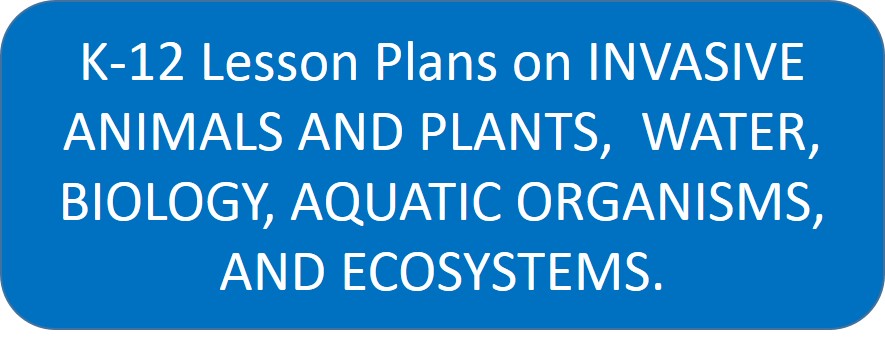What are Invasive Species?An invasive species is a plant, animal, or microbe that is not native to our environment and has negative effects on our economy, environment or health. Ship ballast water is believed to be one of the biggest transporters of invasive species. However, non-native pets and plants is another source that YOU can stop.
Additional information about Invasive Species can be obtained from the Midwest Invasive Species Information Network (MISIN, http://www.misin.msu.edu/). A smartphone app (http://www.misin.msu.edu/tools/apps/) is available that can enable teachers and their students to become active “citizen science” participants in preventing the spread of invasive species by reporting new sightings. Invasive Species at the Belle Isle Aquarium--SEE LIVE VIDEO BELOW!
Click here for a "clickable" list of education resources about invasive species.
|
Click on the Blue or Green buttons to learn more...
Keep Michigan's Pets and Plants from Going Wild!--a Power Point from RIPPLE
Water gardens and invasive species: Video advice from RIPPLE about water gardens.
|
The Aquarium has several displays with "live, and local" invasive non-native species. These include a tank that displays white perch, round goby, and models of zebra mussels and quagga mussels on the sunken hull of a shipwreck. Round gobies, which lack a swim bladder, lay in wait or "hop around" on the bottom, ready for any opportunity for a meal. Given the chance, they will vigorously swarm over and destroy an unguarded bass nest or eat any edible detritus sinking from above. In contrast, the white perch frequently swim in schools and are aggressive predators of small fish. For people who fish, the white perch "steal the bait" from more desirable catch, such as yellow perch. Come to the Aquarium to see these fish and others, in person.
new ballast water technology to stop invasive species |
Invaders in the News

Testing Robot Drones to Detect Invasive Species
Researchers at University of Nebraska-Lincoln are trying out drones to scoop up water samples and test for traces of invasive species in environmental DNA (eDNA). Read more the MIT Technology Review article to learn more. [Photo credit: University of Nebraska-Lincoln in MIT Technology Review, Jan. 20, 2015]
Researchers at University of Nebraska-Lincoln are trying out drones to scoop up water samples and test for traces of invasive species in environmental DNA (eDNA). Read more the MIT Technology Review article to learn more. [Photo credit: University of Nebraska-Lincoln in MIT Technology Review, Jan. 20, 2015]

Divers Knew Their Fish!
Divers in Florida helped identify and capture an invasive chocolate surgeonfish when they noticed a fish that didn't belong. [Photo credit: Deb Devers, Miami Herald - Jan. 10, 2015]. Read article.
Divers in Florida helped identify and capture an invasive chocolate surgeonfish when they noticed a fish that didn't belong. [Photo credit: Deb Devers, Miami Herald - Jan. 10, 2015]. Read article.
Your browser does not support viewing this document. Click here to download the document.
Creation of the above page was funded in part by the Michigan Invasive Species Grant Program through the Departments of Natural Resources, Environmental Quality, and Agricultural and Rural Development.

This material is also based partly upon work supported by the National Science Foundation under Grant No. 1614187.
Any opinions, findings, and conclusions or recommendations expressed in this material are those of the authors and do not necessarily reflect the views of the National Science Foundation.
Any opinions, findings, and conclusions or recommendations expressed in this material are those of the authors and do not necessarily reflect the views of the National Science Foundation.








